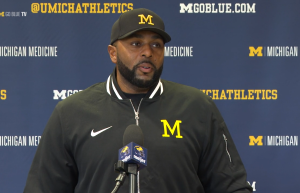Autonomous submarines made with next-generation harvesting systems for energy might be on the horizon. These systems will be added to robotic machines that might be a reality as the technology gets better.
Sweet concept art. This will be interesting to watch. That is, if they’ll let us. 😎 https://t.co/RwWCMmPW9J
— Strikepod Systems® (@Strikepod) February 5, 2021
One of the trends that the US Navy is pursuing is unmanned underwater vehicles for different applications. Aside from unmanned surface vehicles, there are more developments exclusive to the US Navy.
Manta Ray needs little amount of fuel
A week ago, DARPA (Defense Advanced Research Projects Agency) gave the contract to aerospace giant Northrop Grumman and the defense company Martin Defense Group. These companies will be collaborating to design and engineer the ultra-next generation Manta-Ray unmanned underwater vehicle (UUV) for the US military, reported Eurasian Times.
One of the crucial components of the robot UUV is given to Metron to provide a new kind of power source. The robot sub will have a system that will allegedly create its power to keep it running indefinitely. One of the objectives of energy harvesting systems is to allow them to go on missions for a long time.
Reasons for adapting these kinds of submarines (UUV) give the US Navy an advantage in anti-submarine warfare (ASW). This will be a serious capability as more adversaries add more submarines to their arsenals. One system on Trial is the Sea Hunter that tracks and detects enemy subs with an AI. It is projected to sail for long periods with no human assistance.
More money was poured into the project to continue the development of the advanced Manta Ray. Once the project is realized, the first autonomous submarines units will be tested and evaluated for the intended mission.
UUV's development objectives are developing how to create an effective energy system, UUV robustness, stopping biofouling, corrosion prevention, and navigation control as components. The last is to navigate smartly and avoid objection, which is robotic intelligence.
More details on the next generation Manta Ray
The Commander Kyle Woerner, who heads the program for the Manta Ray UUV program. The research and development will be for the future models of unmanned underwater vehicles (UUVs). Once the technologies are mastered it will lead to more possibilities in the future.
He cited the companies working on developing all the Manta's components and taking the approaches into account. Developing the UUVs endurance for indefinite operation time is a significant goal. Overall, the problem in R and D is how to get to a solution.
The Manta should be sonar equipped with a towed sonar assembly to scan for enemy subs and other equipment. Sometimes acoustic sensors will be sunk to the seabed and electronic warfare equipment (ECW).
However, the UUV should have artificial intelligence (AI) capabilities to decide how to act against the enemy or friendly subs. Smart unmanned systems like the Manta Ray will be the future.
It will have a biomorphic shape that is not cigar-shaped like other subs. The body is related to how the robot can recharge itself better from the sea.
Stealth influence design to keep it invisible to sonar to make it undetectable. A low drag design to make it move fast in the water too. According to the program leader, the Manta Ray design will be the first in Autonomous submarines.
Related article : Iran to Develop Unmanned Underwater Vehicle (UUV) Increasing Its War Fighting Capacity
© 2025 HNGN, All rights reserved. Do not reproduce without permission.








